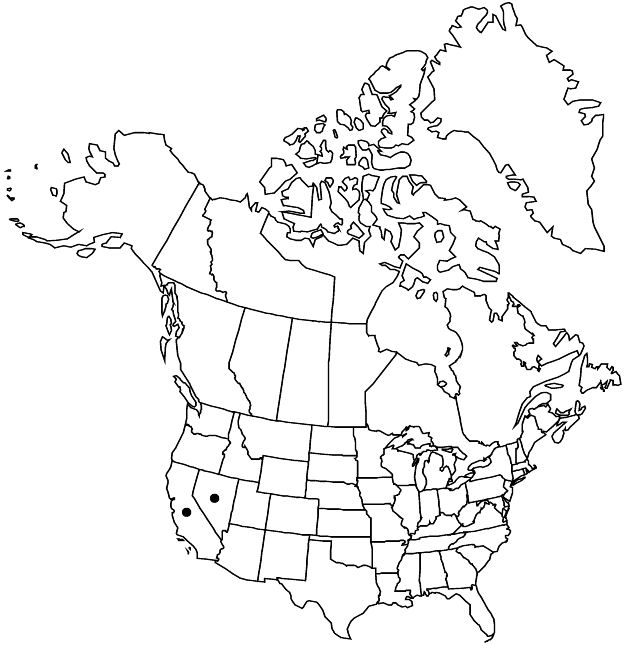Ivesia jaegeri
Bull. Torrey Bot. Club 56: 165. 1929.
Plants green, ± tufted to ± matted, often forming hanging clumps, sometimes rosetted. Stems pendent or prostrate to ascending, 0.3–1.5 dm. Basal leaves ± loosely cylindric to weakly planar, 2–8(–10) cm; sheathing base not or sparsely strigose abaxially; petiole 0.5–4 cm; lateral leaflets (1–)4–6(–8) per side, ± overlapping at least distally, ± flabellate, 2–6(–7) mm, incised nearly to base into 3–6 oblanceolate to narrowly obovate lobes, apex not or scarcely setose, surfaces ± sparsely short-pilose, ± glandular; terminal leaflets indistinct. Cauline leaves (1–)2; blade well developed. Inflorescences (1–)3–15-flowered, open, (0.5–)1.5–4(–7) cm diam. Pedicels 5–30 mm. Flowers 5–11 mm diam.; epicalyx bractlets 5, lanceolate, 1–2 mm; hypanthium patelliform, 1 × 2–4 mm; sepals 2–3 mm, ± acute; petals yellow, narrowly oblanceolate, 1.5–2 mm; stamens 20, filaments 1–1.5(–1.8) mm, anthers yellow, subrotund, 0.2–0.3 mm; carpels 3–8, styles 1.5–2 mm. Achenes tan to light brown, 1–2 mm, ± rugose, ± carunculate.
Phenology: Flowering summer.
Habitat: Dry, rocky outcrops of limestone origin, usually crevices of more or less vertical protected cliffs or boulders, mainly in conifer woodlands
Elevation: 1600–3600 m
Distribution

Calif., Nev.
Discussion
Of conservation concern.
Ivesia jaegeri is known only from the Spring Mountains, Clark County, Nevada, and the Clark Mountains, San Bernardino County, California.
Selected References
None.